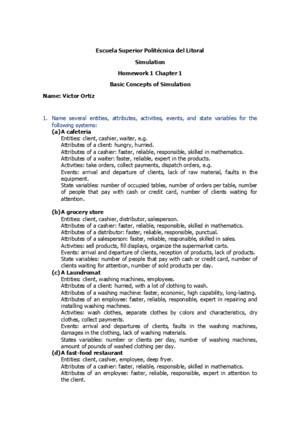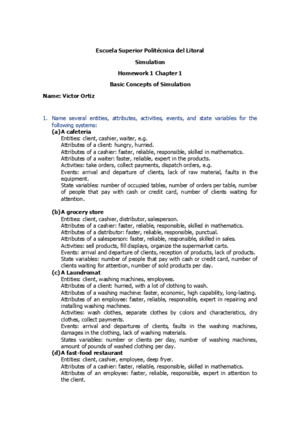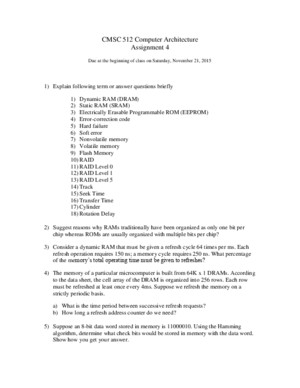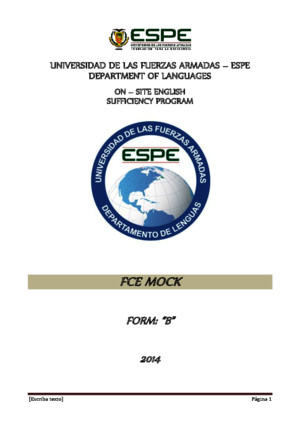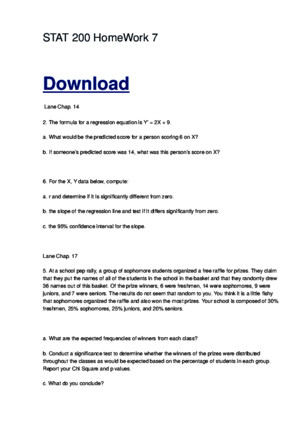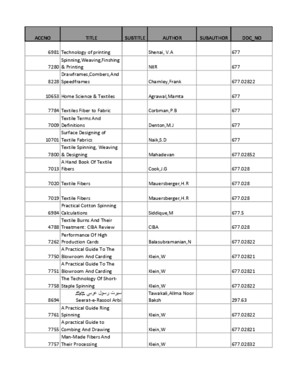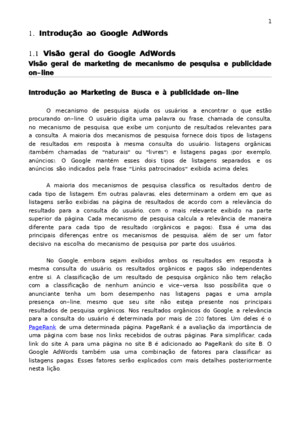Homework
There is document - Homework available here for reading and downloading. Use the download button below or simple online reader.
The file extension - PDF and ranks to the Documents category.
Tags
Related
Comments
Log in to leave a message!
Description
Download Homework
Transcripts
412 The production of carbon disulfide from methane and sulfur vapor can be carried out homogeneously or with a sold catalyst Also, some solid materials act as poison, retarding the reaction The following data were obtained on a flow basis at a constant temperature of 625°C and with an initial reactants ratio of 1 mole of CH4 to 2 moles of sulfur vapor (considered as S2) The first set of data was obtained with the reactor empty (effective volume 670 cm3), and the second set was obtained the packing the reactor with a granular material (7 mesh) which reduced the void volume to 362 cm3 Set Run Feed rate, gmol/h Production of CS2, gmol/h Conversion of methane CH4 S2 1 1 0417 0834 00531 0127 2 0238 0476 00391 0164 3 0119 0238 00312 0262 2 1 0119 0238 00204 0171 2 0178 0357 00220 0123 Was the granular material acting as a catalyst or as a poison in this case? 519 Pure gaseous A at about 3atm and 30°C (120 mmol/liter) is fed into a 1 liter mixed flow reactor at various flow rates There it decomposes, and the exit concentration of A is measured for each flow rate From the following data find a rate equation to represent the kinetics of the decomposition of A Assume that reactant A alone affects the rate vo, liter/min 006 048 15 81 CA, mmol/liter 30 60 80 105 525 The aqueous decomposition of A is studied in an experimental mixed flow reactor The results in Table P525 are obtained in steady-state runs To obtain 75% conversion of reactant in a feed, CA0=08 mol/liter, what holding time is needed in a plug flow reactor? Concentration of A, mol/liter Holding Time see In Feed In Exit Stream 200 065 300 200 092 240 200 100 250 100 056 110 100 037 360 048 042 24 048 028 200 048 020 560 620 Reactant A decomposes with stoichiometry A-> R and with rate dependent only on CA The following data on this aqueous decomposition are obtained in a mixed flow reactor: T, sec CA0 CA 14 200 100 25 190 90 29 180 80 30 170 70 29 160 60 27 150 50 24 140 40 19 130 30 15 120 20 12 110 10 20 101 1 Determine which setup, plug flow, mixed flow, or any two-reactor combination gives minimum T for 90% conversion of a feed consisting of CA0=100 Also find this T minimum If a two-reactor scheme is found to be optimum, give CA between stages and T for each stage 46 Dibutyl phthalate (DBP), a plasticizer, has a potential market of 12 million lb/yr (AIChE Student Contest Problem) and is to be produced by reaction of n-butanol with monobutyl phthalate (MBP) The reaction follows an elementary rate law and is catalyzed by H2SO4 (Figure P4-6) A stream containing the stream enters the reactor The concentration of MBP in the stream entering the reactor is 02 lbmol/ft3, and the molar feed rate of butanol is five times that of MBP The specific reaction rate at 100°F is 12 ft3/lbmolh There is a 1000 gallon CSTR and associated peripheral equipment available for use in this project for 30 days a year (operating 24 h/day) a) Determine the exit conversion in the available 1000 gallon reactor if you were to produce 33% os the share (ie, 4 million lb/yr) of the predicted market (Ans: X=033) b) How might you increase the conversion for the same FAO? For example, what conversion would be achieved if a second 1000-gal CSTR were placed either in series or in parallel with the CSTR? (X2= 055 (series)) c) For the same temperature as part a), what CSTR volume would be necessary to achieve a conversion of 85% for a molar feed rate of MBP of 1 lbmol/min? d) If possible, calculate the tubular reactor volume necessary to achieve 85% conversion, when the reactor is oblong rather than cylindrical, with a major-to-minor axis ratio of 13:10 There are no radial gradients in either concentration or velocity If it is not possible to calculate V and explain e) How would your results for parts a) and b) change if the temperatures were raised to 150°F where k is now 50 ft3/lbmolh but the reaction is reversible with KC=03?
Recommended

